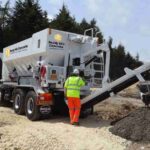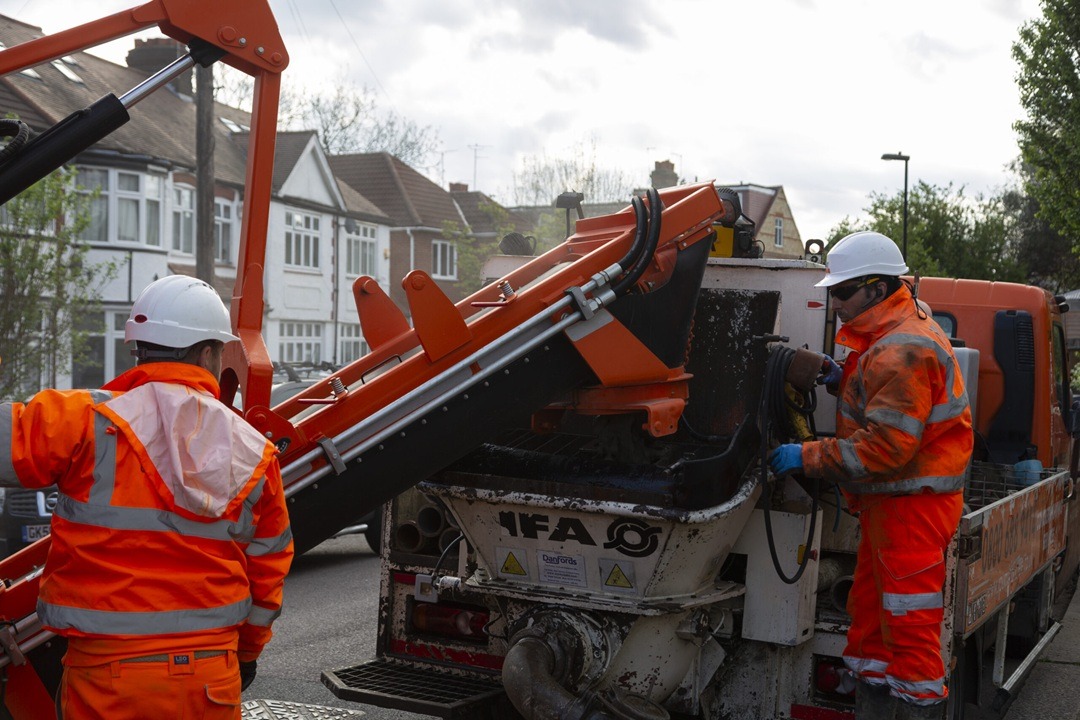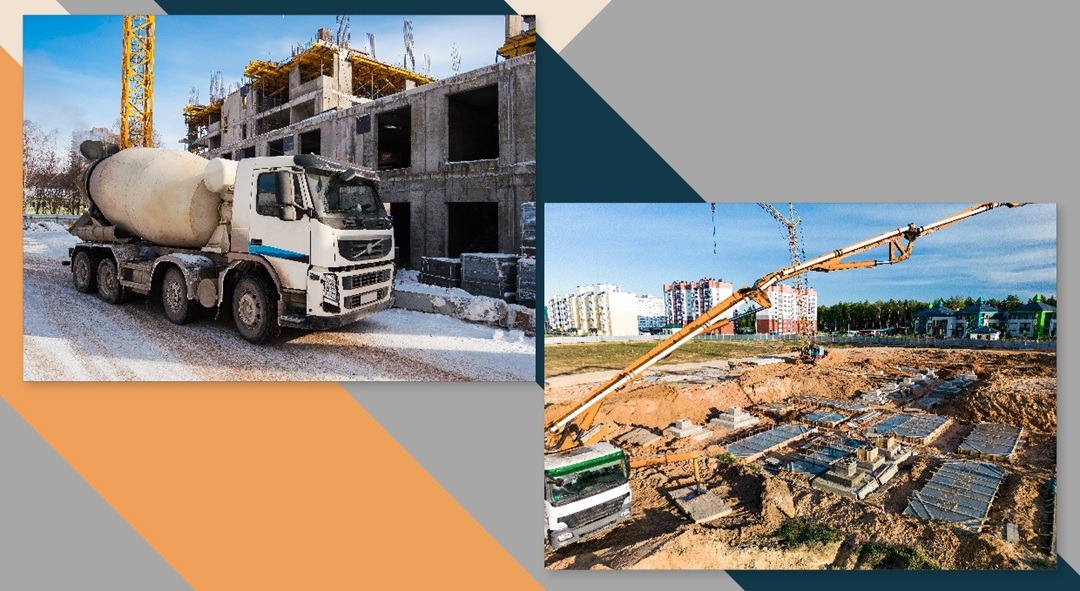“This comprehensive guide explores how concrete pumping services revolutionise construction speed in London’s challenging urban environment. Learn about boom pumps and line pumps, their advantages over traditional concrete placement methods, and how they address London’s unique site restrictions. Discover cost savings, safety improvements, and efficiency gains that help construction projects meet tight deadlines while maintaining quality standards.”
London construction projects face unique challenges with tight urban spaces, strict timelines, and complex site access restrictions. Concrete pumping service technology transforms these obstacles into manageable tasks, delivering concrete faster and more efficiently than traditional methods.
Speed determines success in London’s competitive construction market. Delays cost thousands daily in labour, equipment, and missed deadlines. Modern concrete pumping eliminates bottlenecks that slow traditional concrete placement, helping projects finish on time and within budget.
Want to accelerate your construction timeline? Talk to our experts at Pro-Mix Concrete for rapid, reliable pumping services that keep your project moving forward.
Get Fast Concrete Pumping Quote: 0800 772 3808
What Is Concrete Pumping?
Concrete pumping transports ready-mix concrete through pressurised pipelines directly to placement locations. This technology eliminates manual transport methods like wheelbarrows, crane buckets, and hand-carrying that slow construction progress.
Modern pumping systems use hydraulic pressure to move concrete through steel pipes or flexible hoses. The concrete flows continuously from mixing trucks to exact placement points, maintaining consistent quality and reducing placement time significantly.
Industry Insight:
The concrete pumping industry continues expanding rapidly, with global market growth from £3.51 billion in 2021 projected to reach £4.89 billion by 2028. This growth shows increasing recognition of pumping technology’s efficiency advantages over traditional placement methods.
How Pumping Differs from Traditional Methods?
Traditional concrete placement relies on wheelbarrows, crane buckets, or conveyor systems that create delays between mixing and pouring. Workers manually transport concrete across sites, introducing human limitations and safety risks that slow progress.
Concrete pumping service delivers a continuous flow directly from the truck to the placement point. This eliminates handling delays, reduces labour requirements, and maintains concrete workability throughout the placement process.
Why Speed Matters in London Construction Projects?
London’s urban construction environment creates unique time pressures that traditional methods struggle to address. Tight site boundaries, traffic restrictions, and neighbour considerations demand efficient operations that minimise disruption and delays.
Urban Construction Challenges
Traffic management requirements limit working hours and delivery windows. Construction teams must maximise productivity during permitted times, making efficient concrete placement crucial for meeting project schedules.
Site access restrictions include:
- Narrow streets that prevent large vehicles from positioning themselves
- Height restrictions limiting crane and equipment use
- Underground utilities complicating placement routes
- Neighbor considerations requiring noise and disruption control
Financial Impact of Construction Delays
Every delay hour costs projects hundreds in direct expenses and cascading impacts. London’s premium property market amplifies these financial pressures significantly.
Delay costs include:
- Direct labour expenses and equipment rental fees
- Schedule compression costs and overtime premiums
- Penalty clauses for missed completion deadlines
- Lost revenue opportunities for developers
- Cascading delays affecting finishing trades and inspections
4 Key Ways Concrete Pumping Speeds Up Construction
Concrete pumping technology addresses multiple speed limitations simultaneously, creating cumulative time savings that dramatically reduce project durations compared to traditional placement methods.
1. Rapid and Continuous Concrete Delivery
Modern pumping systems deliver concrete at rates exceeding 150 cubic meters per hour while maintaining continuous flow throughout large pours. This capacity far surpasses manual transport methods that rely on human limitations and multiple handling stages.
Direct truck-to-placement delivery eliminates intermediate steps that consume time and introduce delays. Construction crews focus on skilled tasks like reinforcement placement and finishing work rather than concrete transport logistics.
2. Labour Efficiency and Safety Improvements
Pumping technology reduces manual labour requirements by 50-70% compared to traditional concrete handling methods. This labour reduction allows skilled workers to concentrate on critical construction tasks rather than material transport.
Safety benefits include:
- Eliminated heavy lifting and repetitive strain injuries
- Reduced fall risks from elevated placement work
- Decreased equipment-related accidents and injuries
- Improved site organisation with fewer obstacles
- Consistent workforce availability without injury disruptions
Enhanced safety creates more predictable project schedules by eliminating delays from workplace accidents and associated regulatory compliance issues.
- Precision Placement Reduces Rework
Controlled pumping delivery provides accurate concrete placement that minimises errors requiring costly corrections. Precise flow control prevents over-pouring and ensures even distribution across complex architectural features.
Research by Feys et al. (2022) demonstrates that pumping affects concrete rheology and flow properties in ways that can enhance placement quality when properly managed. The study reveals that millions of cubic meters of concrete are pumped daily worldwide, with advanced flow control techniques actively improving concrete quality.
Quality advantages include:
- Controlled placement reduces material waste by 15-25%
- Even distribution eliminates surface irregularities
- Accurate delivery meets tight architectural tolerances
- Reduced cleanup time from spillage and contamination
This precision becomes especially valuable in London’s high-end residential and commercial projects, where quality standards demand exceptional attention to detail.
Need expert guidance on pump selection for your site?
Our experienced team at Pro-Mix Concrete helps choose the right equipment and approach for maximum efficiency on your specific project.
Get In Touch: 0800 772 3808
4. Access Solutions for Complex London Sites
London construction sites frequently present access challenges that defeat traditional concrete placement methods. Pumping technology provides solutions for these complex logistics situations.
Boom pumps reach over buildings and around obstacles that block conventional equipment access. Line pumps navigate through narrow passages, doorways, and confined spaces using flexible hoses that adapt to site constraints.
Access solutions include:
Delivery over adjacent buildings and structures
Placement through narrow corridors and openings
Concrete transport to the basement and underground levels
Multi-story delivery without crane dependencies
Complex routing around utilities and obstacles
Types of Concrete Pumps and Their Role in Speeding Up Projects
Selecting the appropriate pump type determines construction success and timeline achievement. Understanding pump capabilities helps match equipment to specific site challenges, potentially reducing placement time by up to 70%.
1. Boom Pumps (Built for Big Projects)
Boom pumps are truck-mounted systems with mechanical arms extending up to 70 meters in any direction. These powerful units eliminate constant repositioning, allowing one setup to cover enormous areas efficiently.
Best Applications:
- Multi-story office buildings and apartment complexes
- Shopping centers and large retail developments
- Industrial facilities requiring high-volume concrete
- Projects with open site access for truck positioning
High-volume output makes boom pumps essential for projects requiring 100+ cubic meters in single pours. London’s major developments rely on boom pump efficiency to meet demanding schedules within strict working hour restrictions.
2. Line Pumps (Perfect for Tight Spaces)
Line pumps consist of compact trailer-mounted units connected to flexible hoses that stretch several hundred meters. These systems pump concrete through ground-level pipelines, ideal for restricted access situations.
Best Applications:
- Victorian house conversions and renovations
- Basement construction and underground work
- Narrow streets where boom trucks cannot access
- Projects requiring concrete delivery through buildings
The flexible hose system routes concrete around corners and through doorways where boom pumps cannot reach. London’s period property renovations depend on line pump flexibility to deliver concrete without major site disruption.
Additional Benefits That Support Faster Construction
Beyond direct placement speed, concrete pumping service creates secondary benefits that contribute to overall project acceleration and improved construction efficiency.
1. Waste Reduction and Cost Efficiency
Precise pumping delivery reduces concrete waste by 15-25% compared to traditional methods, creating both time and cost savings.
Cost Benefits:
- Accurate placement eliminates spillage and over-pouring
- Reduced contamination requiring cleanup time
- Lower material replacement costs
- Decreased disposal delays and fees
- Cleaner sites with fewer obstacles
Lower material costs from waste reduction improve project budgets while creating more efficient work environments for other construction activities.
2. Enhanced Site Safety
Pumping reduces worker exposure to injuries common with manual concrete handling, maintaining consistent workforce availability throughout projects.
Safety Improvements:
- Reduced manual handling injuries and strain
- Lower fall risks from elevated placement work
- Decreased equipment-related accidents
- Improved site organisation and cleanliness
- Consistent workforce availability without injury disruptions
Safer work environments maintain steady productivity without delays from incident investigations, medical treatment, or regulatory compliance issues.
3. Environmental and Regulatory Compliance
Efficient pumping operations support London’s strict regulations while maintaining good community relations throughout construction.
Compliance Advantages:
- Reduced noise, dust, and site disturbance
- Faster completion minimises the impact duration
- Cleaner operations with less spillage and waste
- Reduced truck traffic and community disruption
- Better environmental impact management
These factors help construction projects avoid regulatory delays and maintain positive relationships with surrounding properties and communities.
How to Choose the Right Concrete Pumping Service in London?
Choosing appropriate pumping services and equipment determines project success and timeline achievement. Several critical factors influence optimal selection for London construction projects.
Key Selection Criteria
Project scale influences equipment choice and scheduling requirements significantly. Large commercial developments benefit from boom pump capacity and reach, while residential projects often require line pump flexibility and access capabilities.
Decision Factors:
- Site access limitations and street width restrictions
- Concrete volume requirements and pour schedules
- Building height and reach requirements
- Budget constraints and cost optimisation goals
- Timeline pressures and critical path dependencies
Site access often dictates pump type selection regardless of other preferences. London’s narrow streets and height restrictions may require line pumps despite boom pump advantages for large pours.
Service Provider Evaluation
Experienced operators understand London’s unique construction challenges and adapt quickly to changing site conditions. Skilled crews prevent delays from equipment problems, placement errors, and coordination issues.
Essential Provider Qualities:
- Modern, well-maintained pumping equipment
- Experienced operators with London construction knowledge
- Comprehensive insurance and safety certifications
- 24/7 availability for critical concrete placement
- Proven track record with similar London projects
Equipment reliability ensures consistent availability during critical concrete placement phases, preventing schedule disruptions from mechanical failures or operator inexperience.
Coordination and Project Integration
Effective pumping services integrate seamlessly with concrete suppliers, site logistics, and project schedules. Proper coordination prevents delays from timing conflicts and material availability issues.
Coordination Requirements:
- Integration with ready-mix concrete delivery schedules
- Site access planning and traffic management coordination
- Real-time communication during placement operations
- Weather contingency planning and flexible scheduling
- Emergency response capabilities for unexpected issues
Professional coordination keeps all project stakeholders informed about placement progress, schedule changes, and potential issues before they impact construction timelines.
Takeaway
Concrete pumping service eliminates the placement bottlenecks that traditionally slow London construction projects. The benefits extend far beyond simple speed improvements. Reduced labour costs, enhanced safety records, precise material placement, and waste reduction create comprehensive advantages that improve project profitability and timeline predictability.
When London’s tightest deadlines meet its most challenging sites, Pro-Mix Concrete delivers the pumping expertise that keeps projects moving. Our fleet of modern boom and line pumps, operated by the most experienced crews, has accelerated over 500 construction projects across the capital.
We understand that every hour counts in construction. That’s why our 24/7 dispatch system guarantees pump availability when your project needs it most. From Canary Wharf high-rises to Kensington residential renovations, Pro-Mix Concrete provides the speed, precision, and reliability that London builders trust.
Get your free quote today and keep your project moving forward!
Schedule a Consultation: 0800 772 3808
Frequently Asked Questions
Concrete pumping delivers a continuous flow directly to placement points, eliminating manual transport delays. This reduces placement time by 60-70% compared to wheelbarrow methods, while accessing restricted urban sites that defeat traditional equipment.
Boom pumps excel in large commercial projects and high-rise construction with their 70-meter reach and high-volume capacity. Line pumps work best for residential projects, renovations, and sites with restricted access through London’s narrow streets.
Yes, pumping reduces manual labour requirements by 50-70% while eliminating heavy lifting injuries common with traditional concrete handling. Fewer workers needed for transport allows skilled crews to focus on finishing work, improving both safety and productivity.
Concrete pumping provides cost benefits across all project sizes through reduced labour, faster completion, and waste reduction. While larger projects see greater absolute savings, smaller projects benefit from eliminated access challenges and reduced timeline risks in London’s urban environment.
- Dennis Broderick
- Dennis Broderick is the founder and owner of Pro-Mix Concrete Company, a trusted name in ready-mix concrete solutions across the UK. With over 20 years of hands-on experience in the construction and concrete industry, Dennis brings unmatched expertise, practical insights, and a commitment to quality on every project - from residential driveways to large-scale commercial developments.
BlogNovember 15, 2025What is the Mix Proportion of Concrete?
BlogOctober 30, 2025Same-Day and Next-Day Delivery Options from London Concrete Suppliers
BlogOctober 28, 2025Line Pump Hire vs. Boom Pump Hire Prices in London
BlogOctober 25, 2025How Quickly Concrete Must Be Used Once Delivered In London Traffic









